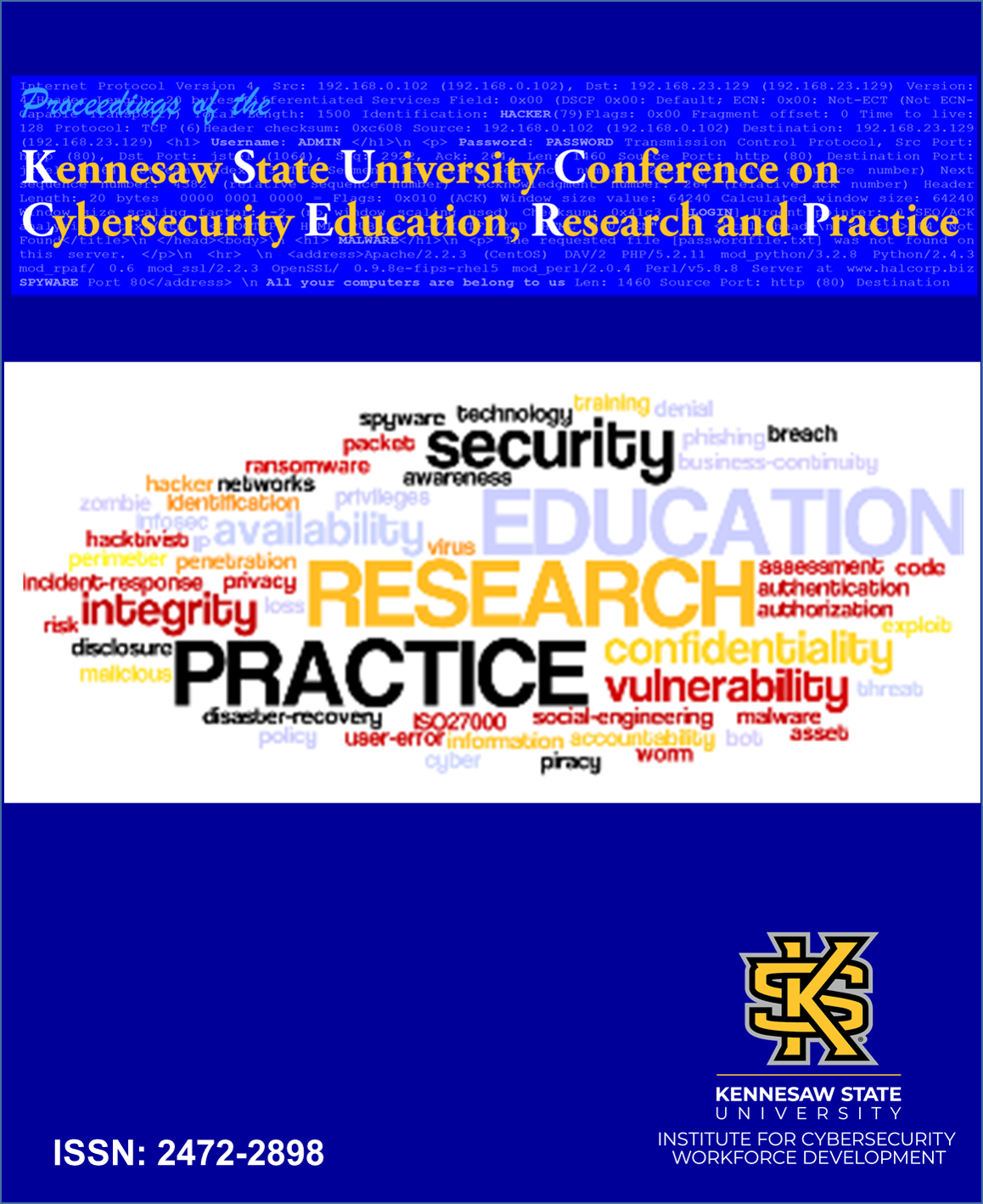An Exploratory Study of Intraoperative Neurophysiologic Monitoring (IONM) Using COBIT 5 for Improving Neurophysiological Tools and Information Use
Start Date
12-10-2019 10:30 AM
End Date
12-10-2019 10:55 AM
Location
KSU Center Rm 400
Abstract
Neurophysiological tools enable information systems (IS) researchers to measure subject responses when engaging in varying activities involving the central nervous system (CNS), the peripheral nervous system (PNS), or the hormone system (Riedl and Léger, 2016). Prior literature has called for rigor in the neuro-information-systems (NeuroIS) research methodology by addressing six critical factors, “reliability, validity, sensitivity, diagnosticity, objectivity, and intrusiveness of a measurement instrument” (Riedl, Davis and Hevner, 2014). Additional literature has reported strengths and weaknesses related to some critical factors, such as reliability and validity, when using neurophysiological tools, and the data and information that they provide (Dimoka, et al., 2012). This exploratory study uses the COBIT 5 (ISACA, 2012; ISACA 2019) framework to identify risks involving intraoperative neurophysiologic monitoring (IONM), a critical function that examines patient responses when engaging in varying activities (Rabai, Sessions and Seubert, 2016; Tamkus, Rice and McCaffrey, 2018) involving the central nervous system (CNS) and the peripheral nervous system (PNS). A questionnaire has been developed to facilitate the collection and examination of this study’s research data from a small sample of U.S. hospitals and other healthcare service providers. Interviews are planned as a follow-up to further examine those risks that address any of the previously stated six critical factors affecting the NeuroIS research methodology (reliability, validity, sensitivity, diagnosticity, objectivity, and intrusiveness) and that involve IONM tools and their derived information use. This study intends to provide a valued contribution to healthcare service providers in strengthening their reliability of interpretable IONM data and information. Also, as a contribution to the existing NeuroIS book of knowledge, this study looks to offer an extended risk management framework to NeuroIS researchers in their approach to future studies involving neurophysiological tools and their information use.
An Exploratory Study of Intraoperative Neurophysiologic Monitoring (IONM) Using COBIT 5 for Improving Neurophysiological Tools and Information Use
KSU Center Rm 400
Neurophysiological tools enable information systems (IS) researchers to measure subject responses when engaging in varying activities involving the central nervous system (CNS), the peripheral nervous system (PNS), or the hormone system (Riedl and Léger, 2016). Prior literature has called for rigor in the neuro-information-systems (NeuroIS) research methodology by addressing six critical factors, “reliability, validity, sensitivity, diagnosticity, objectivity, and intrusiveness of a measurement instrument” (Riedl, Davis and Hevner, 2014). Additional literature has reported strengths and weaknesses related to some critical factors, such as reliability and validity, when using neurophysiological tools, and the data and information that they provide (Dimoka, et al., 2012). This exploratory study uses the COBIT 5 (ISACA, 2012; ISACA 2019) framework to identify risks involving intraoperative neurophysiologic monitoring (IONM), a critical function that examines patient responses when engaging in varying activities (Rabai, Sessions and Seubert, 2016; Tamkus, Rice and McCaffrey, 2018) involving the central nervous system (CNS) and the peripheral nervous system (PNS). A questionnaire has been developed to facilitate the collection and examination of this study’s research data from a small sample of U.S. hospitals and other healthcare service providers. Interviews are planned as a follow-up to further examine those risks that address any of the previously stated six critical factors affecting the NeuroIS research methodology (reliability, validity, sensitivity, diagnosticity, objectivity, and intrusiveness) and that involve IONM tools and their derived information use. This study intends to provide a valued contribution to healthcare service providers in strengthening their reliability of interpretable IONM data and information. Also, as a contribution to the existing NeuroIS book of knowledge, this study looks to offer an extended risk management framework to NeuroIS researchers in their approach to future studies involving neurophysiological tools and their information use.



Comments
Keywords: COBIT 5 • Risk Management • Reliability • Intraoperative neurophysiologic monitoring • NeuroIS